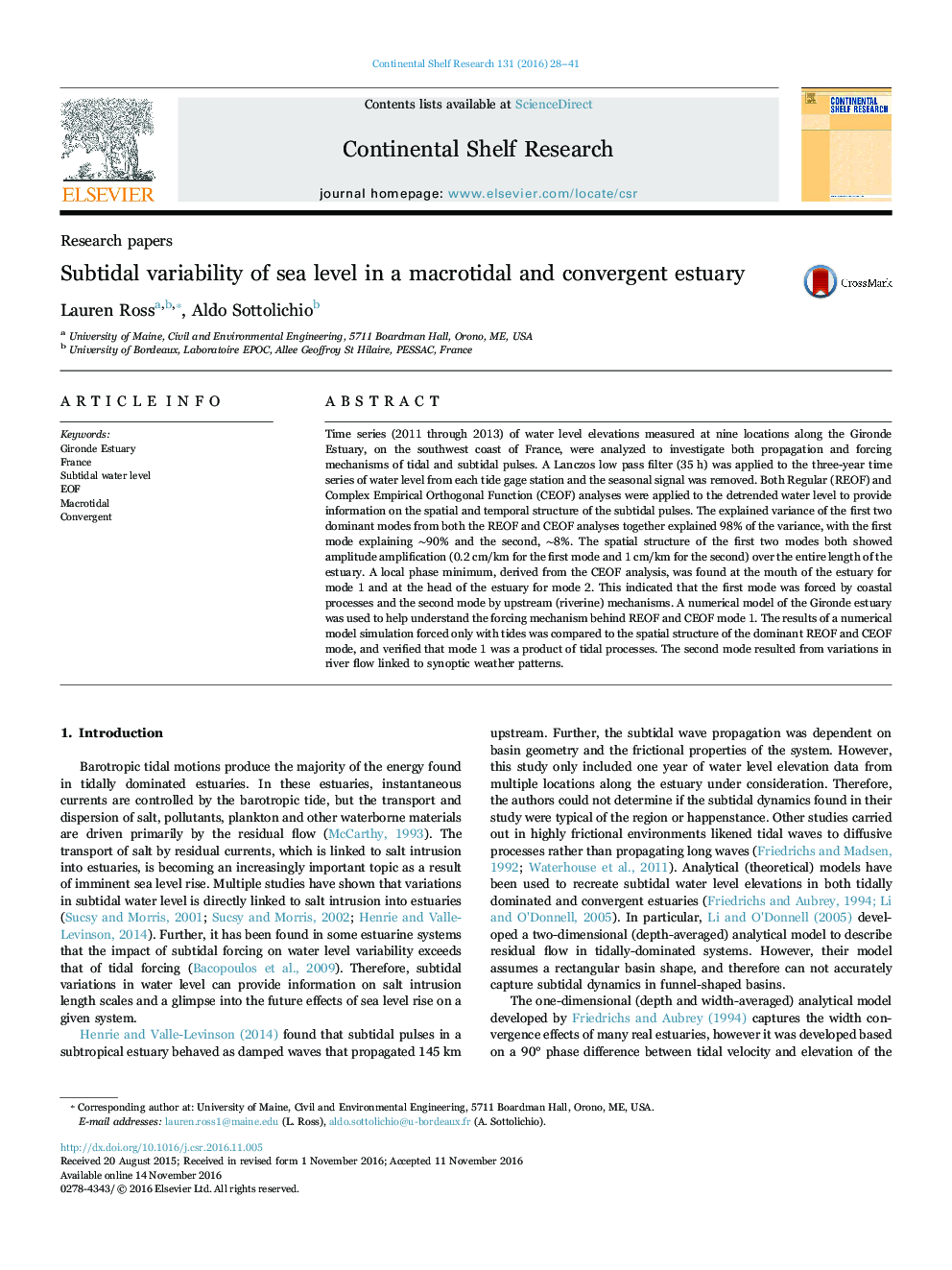| کد مقاله | کد نشریه | سال انتشار | مقاله انگلیسی | نسخه تمام متن |
|---|---|---|---|---|
| 5764598 | 1626082 | 2016 | 14 صفحه PDF | دانلود رایگان |

- The tidal wave has both standing and progressive wave characteristics.
- Subtidal water level variations can be explained by two dominant modes of behavior.
- The first mode is driven by tidal processes and explains â¼90% of the variance.
- The second mode is driven by river flow and fortnightly variations of water volume.
Time series (2011 through 2013) of water level elevations measured at nine locations along the Gironde Estuary, on the southwest coast of France, were analyzed to investigate both propagation and forcing mechanisms of tidal and subtidal pulses. A Lanczos low pass filter (35Â h) was applied to the three-year time series of water level from each tide gage station and the seasonal signal was removed. Both Regular (REOF) and Complex Empirical Orthogonal Function (CEOF) analyses were applied to the detrended water level to provide information on the spatial and temporal structure of the subtidal pulses. The explained variance of the first two dominant modes from both the REOF and CEOF analyses together explained 98% of the variance, with the first mode explaining â¼90% and the second, â¼8%. The spatial structure of the first two modes both showed amplitude amplification (0.2Â cm/km for the first mode and 1Â cm/km for the second) over the entire length of the estuary. A local phase minimum, derived from the CEOF analysis, was found at the mouth of the estuary for mode 1 and at the head of the estuary for mode 2. This indicated that the first mode was forced by coastal processes and the second mode by upstream (riverine) mechanisms. A numerical model of the Gironde estuary was used to help understand the forcing mechanism behind REOF and CEOF mode 1. The results of a numerical model simulation forced only with tides was compared to the spatial structure of the dominant REOF and CEOF mode, and verified that mode 1 was a product of tidal processes. The second mode resulted from variations in river flow linked to synoptic weather patterns.
Journal: Continental Shelf Research - Volume 131, 1 December 2016, Pages 28-41